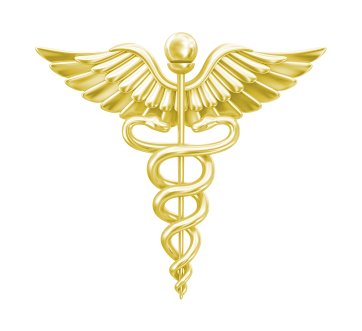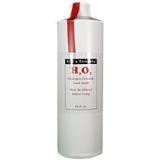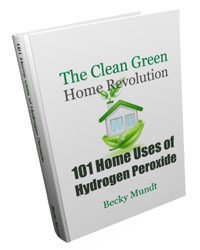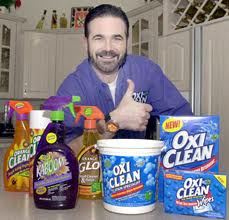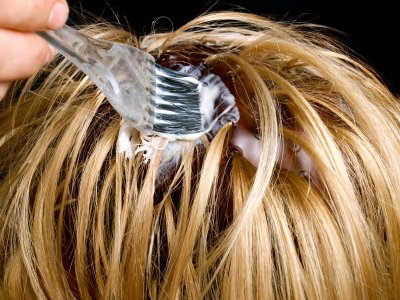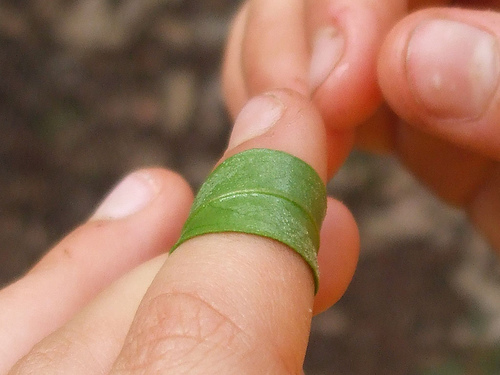 Hydrogen peroxide is an excellent and safe solution for removing molds and mildews including toxic black mold.
Hydrogen peroxide is an excellent and safe solution for removing molds and mildews including toxic black mold.
While many people still consider chlorine bleach a safe cleaning method for removing mold and mildew it should be noted that chlorine bleach while not long-lasting in the environment does create a class of long-lasting substances known as organochlorines which can be extremely toxic. For example, the most carcinogenic substance known today is dioxin which is an organochlorine produced in various applications of chlorine bleaching, or the incineration of PVC.
Hydrogen peroxide, unlike chlorine, does not produce harmful organic compounds when used for removing and destroying molds and mildews, and its high oxidizing power ensures it will destroy the mold or mildew completely when applied correctly.
Mildew and Common Mold Around the Home
For simple mildew and mold in bathrooms and around refrigerator door seals, window sills and other common mildew and minor mold growth areas a simple 3 percent solution works very effectively if given time to do the job. Apply a direct spray or liquid (just pour it straight onto the surface) and let it work for up to twenty minutes. Then wipe clean with a cloth dampened with H2O2 to finish the job.
Tile grout can also be cleaned this way; although depending how long it has been since the grout has been properly cleaned it may require a second application and a little elbow grease with a stiff brush. If you are spraying H2O2 at or above eye level, wear protective glasses to make sure not to get any into your eyes.
Some people are sensitive enough to H2O2 that they feel a slight stinging when it comes in contact with their skin, and so you may want to wear rubber gloves for these types of cleaning applications.
Serious Mold and/or Toxic Black Mold Problems Require a Minimum of 10 Percent Peroxide Solution
For serious mold infestations and particularly toxic black mold infestations, a more serious approach is required.
Many professional mold remediation companies use hydrogen peroxide to do the job of killing and eliminating the mold. It will require some preparation and careful application to do it yourself, but it is not difficult or dangerous if done correctly.
Isolate the Affected Area
First, determine the boundaries of the mold growth and close off the entire area from the rest of the house, garage or indoor space. If there are not doors and windows to close off the area, hang sheet plastic to isolate the area and tape it into place so the area is completely contained. Turn off any air circulation, heaters or air conditioners in the area, and cover any heating or cooling vents in the room to be treated. Cover or remove any furniture (preferably to out of doors in the sunshine). Do not brush or disturb the mold until after the application of peroxide. This is necessary because mold is a spore and will travel in the air if disturbed, and the idea is not to spread the contamination.
Protective Clothing For Working with 10 Percent Peroxide Solution
Next, you’ll need to wear protective clothing – rubber gloves, a respirator mask (if you are removing toxic black mold this is a must) and goggles or safety glasses are required for this job. You will be applying a 10 percent solution of hydrogen peroxide directly to the affected areas, and on vertical walls this will require spraying it on. 10 percent solution is a strong oxidizer, which is what makes it work, but you do not want to expose mucous membranes or especially eyes to this concentration of peroxide. Should you accidentally get it on your skin it will produce a stinging sensation leaving the skin white and disappearing within a day or two but still unpleasant. If you get some on your skin, flush the area with water for a few minutes, this will stop the stinging and there will be no permanent or serious damage. This is not true for the eyes. Eyes can be permanently damaged by concentrations of 4 percent or higher of peroxide, so wear your goggles for this job.
Important! Saturate the Mold with Peroxide FIRST
It is important to wet the mold with the peroxide solution before brushing or working to clean it. The only exception to this is that you can use a HEPA vacuum to remove loose spores carefully and then spray down the area. But try not to disturb the mold or stir it up into the air as it will spread. Start by saturating the mold area with 10 percent solution of H2O2 and then leave the area for at least thirty minutes or so. Return and re-apply the peroxide being careful to fully cover the entire area as well as the areas directly around the mold growth as they will also be contaminated with spores. While the second application is still wet on the surface you can apply a brush or sponge with warm water and mild detergent to remove the dead mold spores.
A bucket of warm soapy water and your spray bottle of 10 percent solution will provide enough power to clean a small room or single wall, in area. Do not remove the plastic or open the area to the rest of the living area until at least 24 hours after your final application of peroxide and wipe down. For seriously deeply penetrating mold repeat the entire procedure 24 hours after the second application making sure to allow the area to be completely saturated with the peroxide for the duration between applications. (After the second spraying and wipe down spray again with peroxide and then wait the 24 hours.)
Some materials, such as particle board, drywall or foam board may have to be completely removed in order to eliminate the mold. In most cases wood, stone or cement surfaces can be effectively cleaned without the need to remove them entirely.
In severe mold infestations between wall joists, behind drywall, etc., as in from a broken pipe or leaking pipe causing long term water damage, or in flooded basements etc., it may be necessary to hire a professional as there is simply too big a job and too toxic a mold growth to take on on your own. In all cases, once the mold has been removed a proper coating of paint or encapsulating product to prevent the return of the mold is advised.
Resources:
Mold Control On a Budget: http://www.mold-control-on-a-budget.com/documents/42.html
The Official Do It Yourself Mold Removal Guide: http://www.blackmoldremovalguide.com/category/do-it-yourself-mold-removal/
